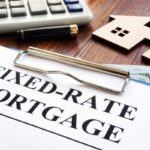Navigating the world of mortgages can be like wandering through a maze. With so many terms and conditions, it’s easy to get lost. One term that often raises eyebrows is the “higher priced mortgage loan” (HPML). What does it mean? How does it affect potential homeowners? And, most importantly, is it something to avoid? Let’s delve into the nitty-gritty of HPMLs and uncover everything you need to know.
What is a Higher Priced Mortgage Loan?
A higher priced mortgage loan is a type of loan that carries an annual percentage rate (APR) significantly higher than the average prime offer rate (APOR). This type of loan falls under the Truth in Lending Act (TILA) and is subject to special rules designed to protect consumers. Essentially, if the APR on your mortgage exceeds the APOR by a certain percentage, your loan is classified as a higher priced mortgage loan.
Key Characteristics of HPMLs
- Higher Interest Rates: HPMLs typically have higher interest rates compared to conventional mortgages.
- Stricter Underwriting: Lenders must adhere to stricter underwriting guidelines to ensure borrowers can repay the loan.
- Mandatory Escrow Accounts: For at least the first five years, an escrow account is required to pay property taxes and insurance.
Why Do Higher Priced Mortgage Loans Exist?
HPMLs are designed to offer loans to borrowers who may not qualify for conventional mortgages due to various risk factors. These might include a lower credit score, higher debt-to-income ratio, or a limited credit history. While these loans carry more risk for lenders, they also provide an opportunity for borrowers to secure home financing when other options might not be available.
The Impact of HPMLs on Borrowers
Taking on a higher priced mortgage loan can have significant implications for borrowers. Let’s explore some of the key impacts:
Pros
- Accessibility: Provides an option for borrowers with less-than-perfect credit.
- Potential for Homeownership: Helps individuals and families achieve the dream of owning a home.
- Building Credit: Successfully managing an HPML can improve your credit score over time.
Cons
- Higher Costs: The increased interest rates mean higher monthly payments and overall costs.
- Risk of Foreclosure: Stricter lending terms and higher payments can increase the risk of foreclosure if financial difficulties arise.
- Complex Terms: Understanding the terms and conditions of HPMLs can be challenging, leading to potential misunderstandings and financial strain.
How to Qualify for a Higher Priced Mortgage Loan
Qualifying for an HPML requires meeting specific criteria set by lenders. Here are the primary factors that lenders consider:
Credit Score
While HPMLs are designed for borrowers with lower credit scores, having a higher score can still impact the terms and interest rates offered. Aim to improve your credit score before applying to secure better terms.
Debt-to-Income Ratio
Lenders will scrutinize your debt-to-income ratio to ensure you can manage the monthly payments. Keeping this ratio low increases your chances of approval.
Down Payment
A larger down payment can offset some of the risks associated with HPMLs, potentially leading to better terms and lower interest rates.
Tips for Managing a Higher Priced Mortgage Loan
If you find yourself considering an HPML, there are strategies to manage it effectively:
- Budget Carefully: Create a detailed budget to ensure you can handle the monthly payments without financial strain.
- Build an Emergency Fund: Having a safety net can help you manage unexpected expenses and avoid missing payments.
- Consider Refinancing: If your credit improves, refinancing to a conventional loan with lower interest rates can save you money in the long run.
Common Questions about Higher Priced Mortgage Loans
What makes a mortgage loan “higher priced”?
A mortgage loan is considered higher priced if its APR exceeds the APOR by 1.5 percentage points for first-lien loans or 3.5 percentage points for subordinate-lien loans.
Are higher priced mortgage loans bad?
Not necessarily. While they come with higher costs, they can provide opportunities for borrowers who might not qualify for conventional loans. It’s crucial to understand the terms and ensure you can manage the payments.
Can I refinance an HPML?
Yes, refinancing is possible. If your financial situation improves, refinancing to a conventional loan with better terms can be beneficial.
Do all lenders offer higher priced mortgage loans?
Not all lenders offer HPMLs. It’s essential to shop around and compare offers from different lenders to find the best terms.
How can I avoid an HPML?
Improving your credit score, reducing your debt-to-income ratio, and saving for a larger down payment can help you qualify for conventional loans with better terms.
Conclusion
Higher priced mortgage loans are a viable option for borrowers who may not qualify for conventional mortgages. While they come with higher costs and stricter terms, they also provide opportunities for homeownership and credit building. By understanding the ins and outs of HPMLs, you can make informed decisions and manage your mortgage effectively. Remember to budget carefully, build an emergency fund, and consider refinancing when your financial situation improves.
Authoritative Links
- Consumer Financial Protection Bureau: https://www.consumerfinance.gov
- Federal Reserve: https://www.federalreserve.gov
- Truth in Lending Act (TILA): https://www.fdic.gov/regulations/laws/rules/6500-1100.html
- Annual Percentage Rate (APR): https://www.investopedia.com/terms/a/apr.asp
- Average Prime Offer Rate (APOR): https://www.ffiec.gov/ratespread/aportables.htm
By staying informed and prepared, you can navigate the complexities of higher priced mortgage loans and work towards securing the best possible terms for your financial situation. Happy house hunting!







